#wildlife tips
Explore tagged Tumblr posts
Text
youtube
Leaping into the Secret Life of Sifakas
Discover the incredible sifaka! These amazing lemurs leap through Madagascar's forests, showcasing unique social behaviors and adaptations. Don't miss out!
Check out my other videos here: Animal Kingdom Animal Facts Animal Education
#Helpful Tips#Wild Wow Facts#sifakas#lemurs#wildlife#animal behavior#Madagascar#animal facts#wildlife conservation#nature education#animal kingdom#endangered species#animal enthusiasts#primates#conservation tips#wildlife tips#educational resources#youtube#animal education#animal habitats#animal science#fun animal facts#Youtube
0 notes
Photo
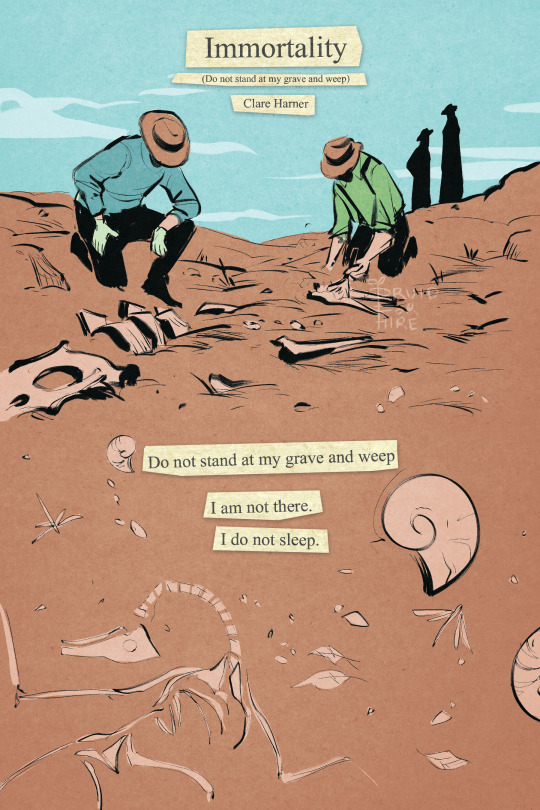
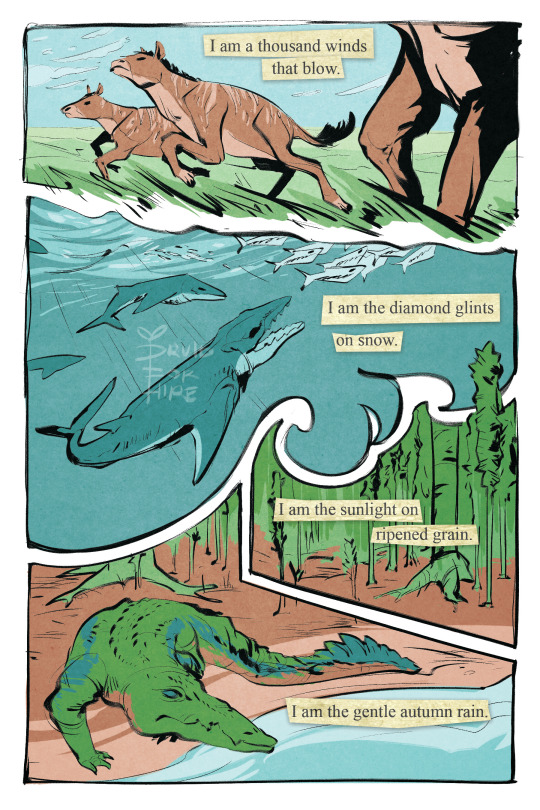
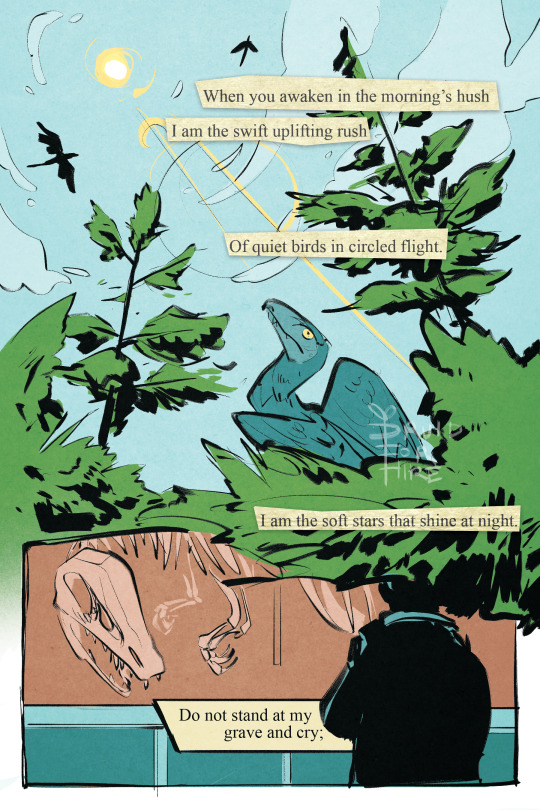
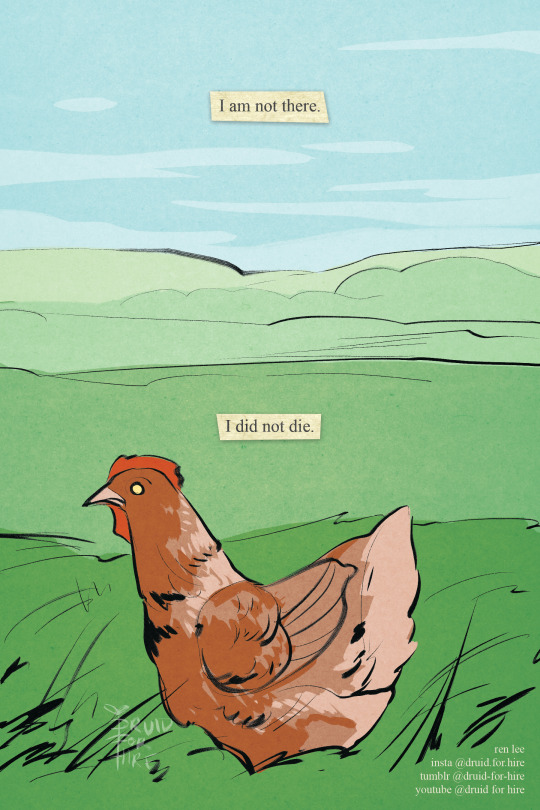
[image id: a four-page comic. it is titled "immortality” after the poem by clare harner (more popularly known as “do not stand at my grave and weep”). the first page shows paleontologists digging up fossils at a dig. it reads, “do not stand at my grave and weep. i am not there. i do not sleep.” page two features several prehistoric creatures living in the wild. not featured but notable, each have modern descendants: horses, cetaceans, horsetail plants, and crocodilians. it reads, “i am a thousand winds that blow. i am the diamond glints on snow. i am the sunlight on ripened grain. i am the gentle autumn rain.” the third page shows archaeopteryx in the treetops and the skies, then a modern museum-goer reading the placard on a fossil display. it reads, “when you awaken in the morning’s hush, i am the swift uplifting rush, of quiet birds in circled flight. i am the soft stars that shine at night. do not stand at my grave and cry.” the fourth page shows a chicken in a field. it reads, “i am not there. i did not die” / end id]
a comic i made in about 15 hours for my school’s comic anthology. the theme was “evolution”
#dinosaur#evolution#comic#prehistoric#animal#wildlife#paleontology#biology#poetry#comics#original#my art#archaeopteryx has no direct living descendants i know#but i wanted something aerial and the dinosaur to bird connection is classic and well known anyway#also the chicken over any other bird is very on purpose#its the mix of truth and comedy and genuineness and the fantastic in the mundane#its me asking you to see something so wonderful in something taken so un-seriously#and to love it both ways#also the jurassic park thing#where someone saw the reconstructed gait of a dino#and said. hey hang on. i know that walk.#and pulled up footage of a chicken walking#which jumpstarted the entire study into the link between dinosaurs and birds#in the end take whatever you want from it i just thought id provide some insight#i always like it when other artists do#the point is that i enjoy when people laugh at the end and when they dont#and i like it when they cry. i like it best when they both laugh and cry. eeaao intent#anyway mourn your losses but to live is to change#also hi guys i finally figured out tipping after 5 months so no more annoying ko-fi link#the antidote to despair is awe
151K notes
·
View notes
Note
cutest shark facts?


Nurse sharks and white tip reef sharks form a pile and cuddle!
It's believed to be a form of social bonding and has helped challenge the "lone shark" assumption, allowing us to learn more about shark ecology and interaction!
#marine biology#marine ecology#animals#science#biology#animal facts#wildlife#marine life#ocean#fun facts#fish#shark#sharks#nurse shark#white tip reef shark#cute#cute facts#cute animals
3K notes
·
View notes
Text

Black-tipped Darner (Aeshna tuberculifera)
September 27, 2024
Oxford County, Maine
#bug#bugs#photographers on tumblr#black tipped darner#Aeshna tuberculifera#dragonfly#dragonflies#bugblr#entomology#insects#insect#nature#animals#wildlife photography
326 notes
·
View notes
Text
wait did i ever post about the incredibly bizarre rattlesnake awareness posters at my old job here. i couldnt legally photograph them so you have to trust me when i tell you this is the most faithful recreation i could possibly create
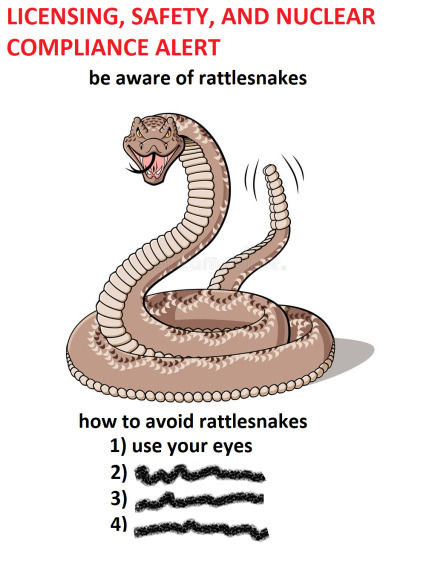
#hawk noises#naturalist#nature#ecology#zoology#biology#wildlife#i need you to understand i am not taking the piss they like. actually looked like this. tips 2-4 were just like normal tips#but 1 straight up was Use Your Eyes#this was the job in the desert lmao. it sucked. i do not miss it but i do miss being right next to the desert#id spend my breaks out there. found a dessicated rattlesnake out there once. kept it. only good part of that job
288 notes
·
View notes
Text
hihi i’ve not made a post on tumblr in literal years and i have no idea if you can even like reply/comment anymore but i finished this art piece yesterday and it took me a few days but im really unhappy with how it turned out :( i’m really upset by this bc i think of myself as a creative person but i suck at art -_- so id like to ask for tips to improve </3 because i have a specific artstyle and art tips and tutorials lean more towards realism and that’s just not for me :< any tips would be appreciated </3 (i say as if anybody will see this)

#smallishbeans#smallishbeans fanart#art tips#art help#AHHHH HELP ME PLEASEEEEE#trafficblr#artists on tumblr#traffic fanart#wildlife#wild life fanart#life series#life series fanart
51 notes
·
View notes
Text


An oragange tip butterfly - Anthocharis caradmines. Round here, they have been prolific enough that there is a good chance of finding an egg on any cuckoo flower plant (Cardamine pratensis) you care to examine.
#Anthocharis#Anthocharis cardamines#lepidoptera#butterfly#eggs#orange tip#wildlife photography#Argyll#UK#insect#Cardamine pratensis
70 notes
·
View notes
Text
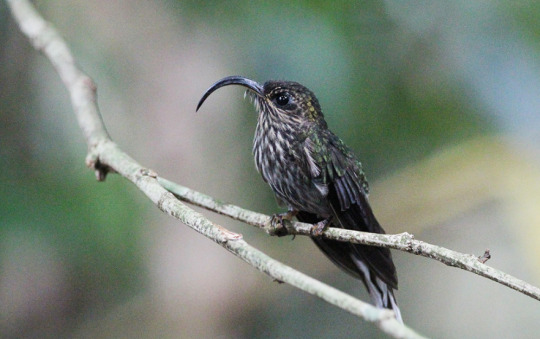
White-Tipped Sicklebill (Eutoxeres aquila)
Family: Hummingbird Family (Trochilidae)
IUCN Conservation Status: Least Concern
The distinctive elongated, downwards-curving and perhaps just slightly goofy-looking beak of this small, dull-coloured hummingbird is an adaptation that allows it to feed on the nectar of plants with curved, tube-like flowers, particularly “lobster claws” in the genus Heliconia, which in turn rely heavily on sicklebills for pollination. Found mainly in evergreen forests across southern Central America and northern South America, White-Tipped Sicklebills, like other hummingbirds but unlike the vast majority of other bird species, utilize an insect-like manner of flapping that allows them to hover and move in any direction while in flight in order to carefully position themselves in a suitable place to extend their beaks and long, flexible tongues into flowers in order to feed, with a diet of sugar-rich, easily digestible nectar being necessary to meet the immense nutritional requirements associated with the extremely rapid flapping that makes their style of flight possible. Unusually for a bird White-Tipped Sicklebills are believed to breed multiple times each year, with males gathering together during the breeding seasons, producing harsh, high-pitch calls to attract females to their location and battling for the attention of mates in mid-air in a form of synchronised competitive courtship known as lekking. After mating, female White-Tipped Sicklebills build nests out of mammal fur, plant roots and spider webs (often hanging from or near Heliconia leaves, allowing for easy access to flowers) into which they lay 1-2 tiny eggs.
--------------------------------------------------------------
Image Source: Here
#White-Tipped Sicklebill#white-tipped sicklebill#sicklebill#sicklebills#hummingbird#hummingbirds#zoology#biology#ornithology#wildlife#animal#animals#south american wildlife#central american wildlife#bird#birds
91 notes
·
View notes
Text
Hanging On By A Thread

A Paradise Tree Snake (Chrysopelea paradisi) and Arrowhead Vine busying themselves on the trunk of a Silver Date Palm in the Gardens by the Bay. Photo credit: Jonathan Chua.
We had only noticed the tree snake among the Arrowhead Vine after photographing the vine. I had to go around the palm to get this frontal view of the snake. Despite keeping silence and my movement dead slow, it had however sensed my presence, tried to wave me off with side-way movement of its head but then quickly decided to shin up the palm tree instead and disappeared from our view.
#photographers on tumblr#arrowhead vine#canon 55-250mm#Chrysopelea paradisi#flora fauna#flora photography#lumix photography#panasonic lumix dc-s1#paradise tree snake#photography tips#pink syngonium#silver date palm#snake pics#wildlife photography#wildlife pics
39 notes
·
View notes
Text
Green Witchery and Where to Start
i often see beginners starting out their path to green/garden witchcraft buying tons of books (that mostly all recycle the same few facts) and copious herbs (most of which will go to waste)
and while research is great and i know you’re excited to try out spells you see on tiktok or what have you, you should start out more locally, get to know the earth and its spirits around you
i live in what is quickly becoming a rare ecosystem due to forest fires, overdevelopment, and invasive species, and because of this i spend as much time as i can meditating out in the quickly depleting forests learning all i can from them and for them
are there any endangered species in your area? is there anything you can do to help? is there anything you should avoid in your practice to prevent further damage to your local ecosystem?
these are the things you should be researching as you start out, these are the things that will connect you to the plants you intend to use, not buying yet another book that will tell you for the tenth time that lemons are cleansing
#bunny speaks#green witch#pagan#nature#paganism#herbal witch#herbalism#hellenism#kitchen witch#green witch tip#beginner witch tips#witchcraft tips#conservation#garden witch#wildlife#cottage witch#slavic paganism#cottage core#witchcraft#flowers#garden#herbal magic#herbal witchcraft
42 notes
·
View notes
Text
Not only does shipping with Kiawe bring me so much comfort, it has me interested in different places, cultures and biodiversity. It makes me want to learn more to love more.
#One thing I really love now becuz of him is islands — as nations and the cultures they breed as well as the unique (frequently endemic)#wildlife they harbour#and I only ever scratch the tip of the iceberg with what I'm learning#And he could be so real! Apart from the animals in his media being fantasy ones#Everything else could be the same!#I want you to be real I'm learning so much about life and nature and people and the world becuz of you#Ugh this stupid baka 3am mood
22 notes
·
View notes
Text
youtube
Meet the Quokka: Nature's Happiest Animal
Discover the joy of the quokka, an adorable marsupial with a sunny disposition! Learn about its habitat, behavior, and unique traits.
Check out my other videos here: Animal Kingdom Animal Facts Animal Education
#Helpful Tips#Wild Wow Facts#quokka facts#animal education#wildlife tips#nature education#animal kingdom#fun animal facts#wildlife conservation#interesting animal facts#animal behavior#environmental education#animal welfare#cute animals#animal enthusiasts#endangered species#animal science#youtube#animal habitats#Youtube
0 notes
Text
reminder to leave the leaves!! 🍂

you can (and should) use the fallen autumn leaves as mulch in your garden beds!! leaves not only enrich the soil, keeping the soil below in peak condition and helping your perennials stay alive during the cold, but the leaves also create overwintering homes for the beneficial bugs necessary for your garden and the environment -- such as certain species of bees, fireflies/lightning bugs, certain butterflies, pill bugs, moths, and so many more!
"Leaves, brush piles, fallen logs, plant stems, and flower heads might not be growing anymore, but they aren’t trash — they are natural homes for wildlife! A layer of leaves is vital insulation from the cold for the many animals that hide within (or in the soil beneath), like quite a few butterflies. Others, like many native bees, nest within stems, flower heads, or pieces of wood. Throwing out all of your leaves and other plant material isn’t just taking away options for shelter; there’s a good chance you’re tossing out many animals that have already settled in!" --Xerces Society for Invertebrate Conservation
Reliable sources also advocating for Leave The Leaves:
Xerces Society for Invertebrate Conservation
USDA
National Wildlife Federation
#hobby: gardening#important#gardening tips#gardening advice#gardening#gardenblr#garden blog#garden#leave the leaves#bugs are friends#bugs#wildlife#environment#mulch#autumn#fall
15 notes
·
View notes
Text
Lets talk about Wildlife Photography
I think social media makes it a hard thing to get into. Amazing locations are shown, awesome gear, and fit people that go on crazy long hikes.
I would like to share my perspective from someone that is far from well off. I feel it's easy to look at something online and wish for that life. I do it to often myself.
I started fully getting into wildlife photography myself around two years. I have both autoimmune and neurological issues so my hikes are often limited. When I do get out on hikes (usually only up to 2 miles at most) I can't do much else for a week. My gear is either pre owned or was financed over small payments. 95% of my photos were taken from my car.
Good places to look and when
(Some things may vary from state to state all of my opinions are formed from my experiences)
First off timing, dusk and dawn. Timing it out where the animals are out and you still have good lighting is rough. Preferably, you would like every animal to be out during golden hour, but that often doesn't happen.
Try finding Facebook groups for any refuge or park to get an idea of where and when the animals may be at your local parks.
Wildlife refuges are a great place to look for animals, but can be limited on access and be a bit more seasonal. You'll almost always see atleast one animal, but timing out when the animals you are looking for tend to hangout here may take a bit. For instance the elk at my local refuge winter here but are basically non-existent in the summer.
County roads are a great place to cruise around looking for wildlife. The farms tend to hold deer. Especially if your in an area that grows alot of corn 🌽. They can also have a ton of pronghorn if you live in the prairie.
Neighborhood parks. Especially with mule deer, I find more bucks wandering neighborhoods than the back country. These parks tend to be great for some of the more common birds as well.
National parks, State Parks, and National Forests are always wonderful places to find wildlife. Depending on location, they can be far and few. There's usually more info about animal locations for these. Whether that be social media groups or large groups of stopped cars when your in the park.
You'll probably have to drive a bit unless your in a prime location. My favorite place to see wildlife is 2 hours away.
Frequency
You will have amazing days that feel like pure magic with a bounty of awesome opportunities. Then you will have a week or weeks where you don't see anything. Maybe you do see an animal, but they are in a junkyard, too far away, or the lighting is just too bad and they aren't there the next morning. You will be frustrated, and no matter how much you think you know these animals and their habitats. They are still wild animals. Maybe it was a warmer winter or the hunting pressure that year was higher? Either way, there are times you just don't get lucky.
Gear
Start with something beginner friendly don't jump into a super high end DSLR. They are complicated and can be very confusing. I would recommend a D3300 or something from that series. You can find some on eBay with lenses for around $300. The 55-200mm kit lens it often comes with is a wonderful lens to start off with.
Practice
It's good to practice on domestic animals. Whether that be your pet cat or a horse alongside the road. I did horse photography for years before I got into wildlife photography. Going to horse shows can be a great way to practice motion shots and get a feel for your settings. Oftentimes, with wildlife the opportunity window for a shot is only seconds.
There's a ton of wonderful camera specific help if you look up your camera model with the word "guide" "help" or "tips" on YouTube.
Nikon Teaching Photography on Facebook is an abundant resource. There's many wonderful camera help groups on Facebook.
Random tips
Write down everything and try to put an answer to these questions in the summary. What animal did you see? what time was it? what day? how cold was it?
Some animals are creatures of habitat, and others tend to be more random. For me, my local elk tend to generally stick to more of a schedule, and the mule deer are pure chaos lol.
Bring basic survival items in your car if you plan on heading out into the back country. Extra food, water, battery packs, jumper cables, a shovel, first aid kit.
It's better to turn around than to be stuck miles back into the forest without service. The super muddy or snowy trail isn't worth it unless you plan on walking it.
9 notes
·
View notes
Text
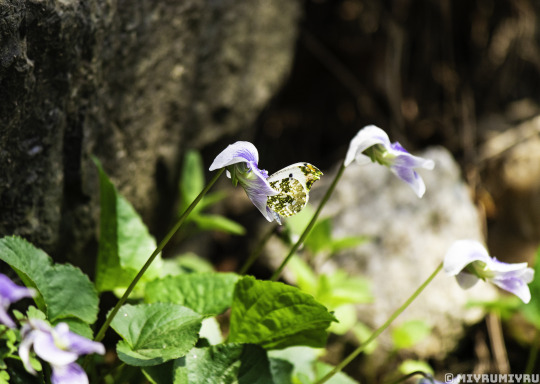
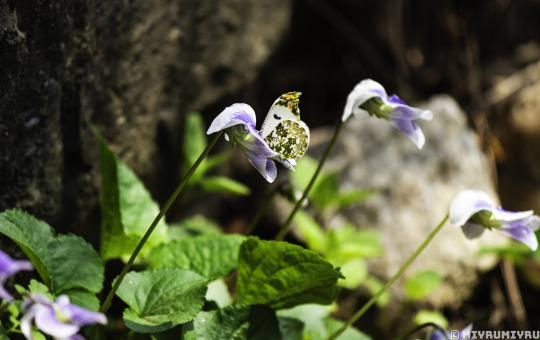

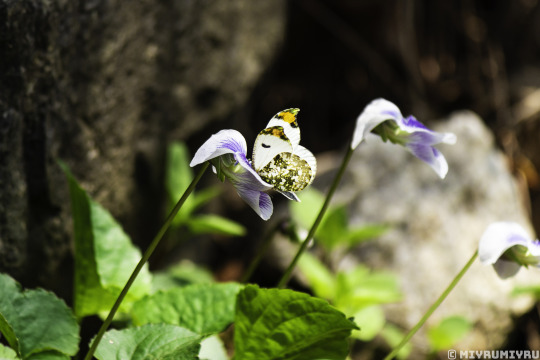

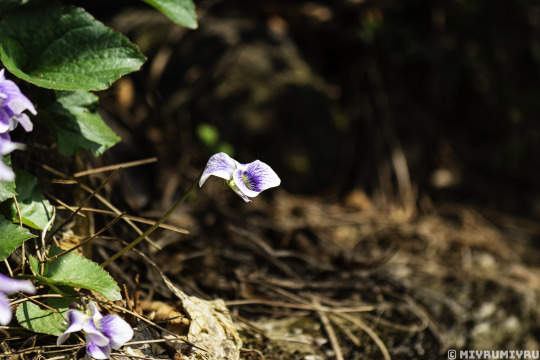
Little herald of spring! ✾(∪へ∪-)
They only appear on early spring and disappear without a trace.
(M) 갈구리나비 (Yellow tip) [Anthocharis scolymus]
Common blue violet (Viola sororia)
#photographers on tumblr#my photography#original photographers#lensblr#photography#insect photography#wildlife photography#macro photography#nature photography#nature#naturecore#insect#butterfly#pieridae#yellow tip#bugblr#biology#entomology#little angel#white angel#so tiny#so precious#they are really small#almost toenail size#see you next year little angels#april 7 2024#noai#no ai#no to generative ai
26 notes
·
View notes
Text

youtube
#speculative biology#speculative evolution#speculative zoology#spec evo#specevo#specbio#spec bio#spec zoo#worldbuilding#video essay#youtube#youtube video#video#video post#art#art video#creature design#creature concept#creature posting#creature talks#creature thoughts#art advice#art tips#nature#wildlife#ecology#speculative ecology
20 notes
·
View notes